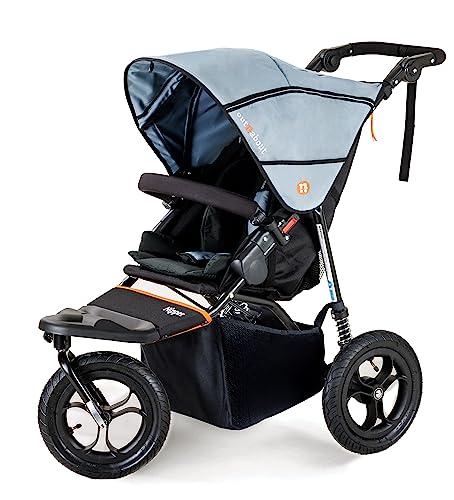Transitioning from Pram to Stroller: A Comprehensive Guide for Parents
Navigating the world of baby equipment can be overwhelming for new parents, particularly when it comes to choosing between prams and strollers. Both serve vital functions, however they are created for different needs and stages of a kid's development. This short article aims to notify moms and dads about the transition from prams to strollers, outlining the benefits and factors to consider while providing practical ideas.
Comprehending Prams and Strollers
Before diving into their distinctions, it's important to understand what constitutes a pram and a stroller.
Prams:
A pram, short for perambulator, is generally created for babies as much as around 6 months old. It includes a flat, cushioned sleeping area and is mostly planned for transferring really kids. Prams are developed for convenience and safety, as newborns require to lie flat to support their spinal column and organs.
Strollers:
Strollers, or pushchairs, are designed for a little older children who can sit up unaided. They can be found in numerous styles and setups, from light-weight umbrella strollers to heavier-duty models appropriate for rough surfaces. Strollers are more versatile and easier to navigate in congested areas, making them a popular option for active families.
Benefits of Transitioning from Pram to Stroller
- Increased Mobility and Convenience
Strollers are usually lighter and more compact than prams, making them simpler to steer through shops, public transport, and crowded areas. Most strollers can fold easily, enabling convenient storage. - Versatility for Different Activities
Modern strollers often come with numerous configurations and can accommodate different activities, consisting of jogging, outdoor experiences, and shopping journeys. They can likewise adjust to match kids of various ages and weights. - Improved Child Comfort and Safety
Numerous strollers now come equipped with sophisticated safety features, such as five-point harnesses and reclining seats, making sure that older babies and young children remain comfy and safe during trips. - Cost-efficient Solution
Instead of buying both a pram and a stroller, families can buy a top quality stroller that fulfills the requirements of their growing child, potentially conserving cash in the long run.
When to Make the Transition
The transition from a pram to a stroller generally happens when the kid reaches around 6 to 7 months of age or when they can sit up unassisted. However, a number of elements can affect this transition, including:
- Child's Development: If the kid reveals signs of wishing to explore their surroundings, it may be time to change to a stroller.
- Family Lifestyle: Active households may need a stroller quicker to accommodate getaways and travel.
- Convenience: Observe the child's comfort level. If they seem confined in a pram or are ending up being more active, it's time to think about a stroller.
Picking the Right Stroller
Choosing the right stroller requires careful consideration of a number of factors:
| Factor | Description |
|---|---|
| Security Features | Search for tough construction, effective brakes, and harness systems. |
| Weight and Foldability | Select a lightweight stroller that is easy to fold and carry. |
| Age Appropriateness | Ensure the stroller is fit for your child's age, weight, and height. |
| Maneuverability | Test how easily the stroller relocations and turns, particularly in congested areas. |
| Storage Space | Think about the storage capability below the stroller and the size when folded. |
| Adjustability | Look for strollers with adjustable functions, such as seat recline and manage height. |
Frequently asked questions about Transitioning from Pram to Stroller
Q: Is it needed to switch to a stroller?A: While it's not necessary, changing to a stroller normally offers more versatility and ease for both moms and dad and child as they grow. Q: What features must I prioritize
in a stroller?A: Prioritize security features, weight, foldability, and storage capability based on your way of life and activities with your child. Q: Can I use a stroller for newborns?A: Some strollers can accommodate baby safety seat or
have flat reclining seats, making them ideal for
newborns. Constantly examine the producer's standards. Q: How can I guarantee my child is comfortable in a stroller?A: Look for strollers with cushioned seats, multiple recline positions, and adjustable leg rests to accommodate your child's comfort. Q: What are the very best types of strollers available?A: Popular types consist of umbrella strollers, running strollers, travel system strollers, and convertible strollers, each catering to variousrequirements. Continuing for a Smooth Transition Test Out Different Models: Before committing to a purchase, physically test different strollers to see which one matches both you and your child best. Include Your Child:
If they are old enough, allow your
kid to check out various strollers to see which they find most comfy. Read Reviews: Consider taking a look at online evaluations and suggestions from other moms and dads to better notify your choice
. Plan for Storage and Transport: Factor in how the stroller will fit into your cars and truck or home storage area to avoid future inconveniences.
- Examine Your Activities: Think about where and how you plan to use the stroller-- city areas may need a different type compared to rural or off-road settings.
- Transitioning from a pram to a stroller is an essential milestone in a child's life and a substantial choice for parents. By comprehending the differences and
advantages of each, parents can make informed options that will support their family's way of life and their kid's advancement. Armed with the right information, parents can confidently browse this shift and
ensure that their child is safe, comfortable, and all set for all the adventures ahead.

